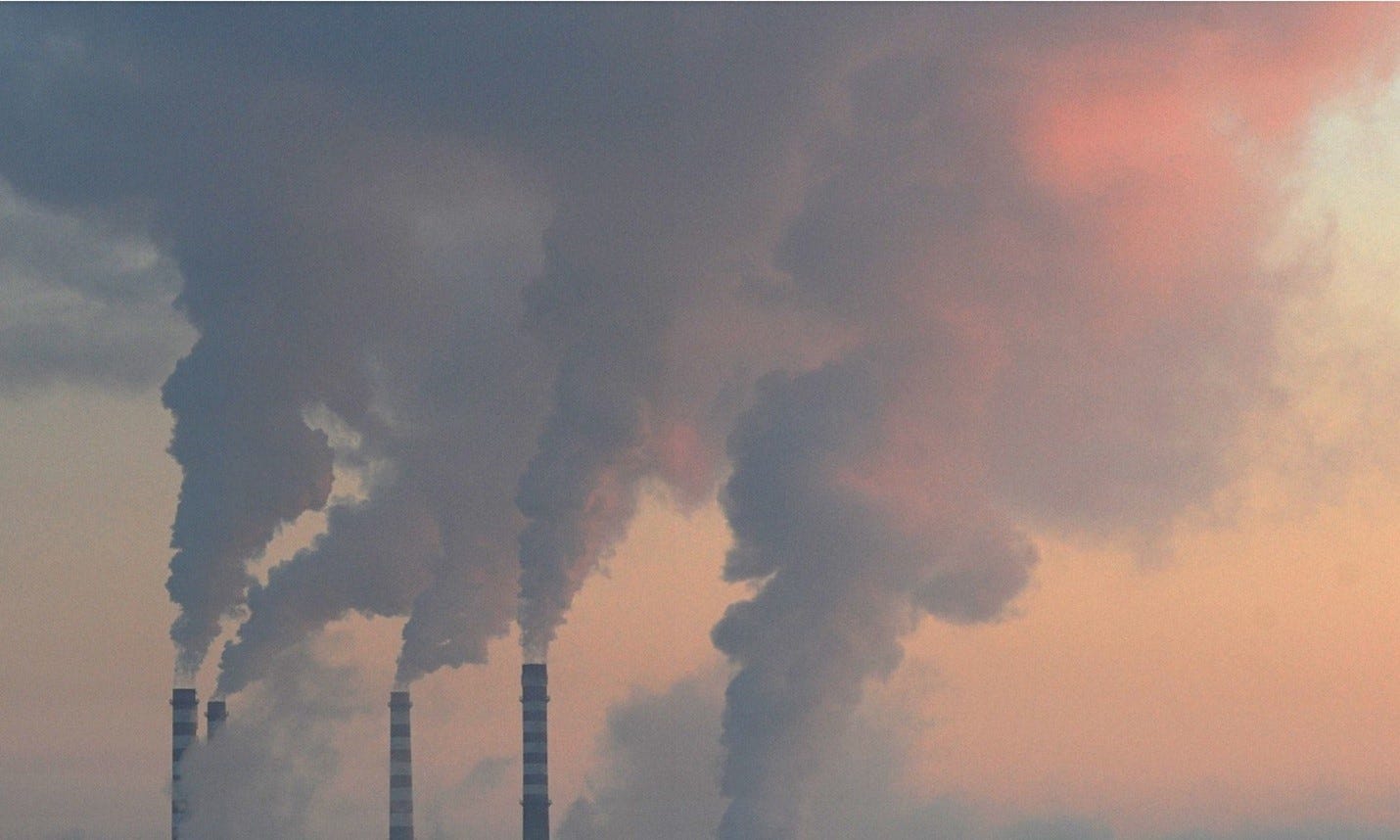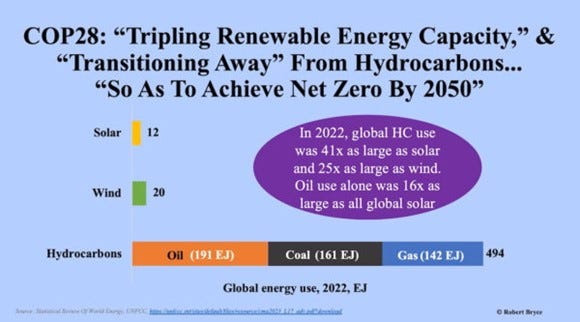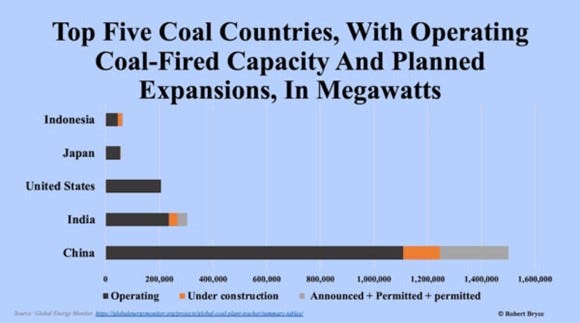All the Money in the World: Another Climate Summit Bites the Dust
Even after thirty years of non-stop climate hysteria from the U.N., coal-generated energy is at an all-time high. That’s because people prefer life over death.
Image: The Guardian
In 1992, the inaugural “Conference of the Parties” (COP) summit was held to announce the United Nations climate agreement, with signatory countries pledging to curtail the use of carbon-based energy and move toward “renewable,” or “green,” energy sources. The latest conference, COP28, was recently held in Dubai, UAE, and to the total dismay of the many thousands of those in attendance, the host country’s minister of industry told the crowd that there is “no science” behind “environmentalist” calls to ban fossil fuels. He's right – there are only theories, embellished by years of fear mongering.
For more than thirty years the COP climate coalition has been beating the same tired drums of weather apocalypse if we don’t reduce our use of reliable and plentiful carbon-based energy, yet it is abundantly clear that the use of hydrocarbons, more specifically coal, will not be reduced – much less eliminated – in the foreseeable future. In fact, the global use of coal is sharply increasing.
Why is that? How can it be that after generations of caterwauling by the
“green” environmental movement, the world is continuing to increase its use of coal for energy generation? With all of these “renewable” energy alternatives available, what is the rationale for emerging nations to ignore “renewable” energy in favor of dirty, earth-killing coal?
In a single word: Reality.
Energy author Robert Bryce informs us that “The International Energy Agency (IEA) expects coal use to rise by 1.4 percent this year and set a new record of 8.5 billion tons.” Meaning, more coal is being burned today than ever.
Looking at hydrocarbons as the foundation of our modern economy’s reliance for its very existence, it is clear that “transitioning” toward “renewables” is utter nonsense. The energy capacity that took hydrocarbon technologies and innovations centuries to deliver, COP28 says can be replicated in 26 years by “renewables.”
Source: Robert Bryce
The conference required all countries in attendance to commit to a tripling of their current “renewable” energy capacity by 2030 in order to achieve “net zero” carbon emissions by 2050. Again, looking at the chart above, it is painfully obvious that even a quadrupling of “renewable” sources of energy cannot even come close to delivering the necessary energy to sustain today’s modern economies, and the attainment of “net zero” emissions by 2050 is nothing more than a cruel joke.
Until recently, no country has done anything as stupid as shutting down reliable sources of energy capacity without having a workable plan to replace that capacity, on a realistic timetable, or even within a reasonable budget. But here we are.
“Change in the weather…”
Per the COP28 agreement, this proposed reduction in the use of carbon-based energy is in service of a goal of reducing the average planetary temperature by 1.5 degrees centigrade. This global average temperature goal, assuming it is even possible to scientifically achieve, is completely arbitrary and modeled largely on temperature scenarios that are wildly exaggerated and historically unprecedented.
Who cares if the global temperature average rises, as it has done over and over for 4.5 billion years, and will continue to do so forever? Are we willing to risk millions of lives by shutting off access to affordable, reliable energy in pursuit of keeping the earth’s climate from changing? Would it not be better for humans to adapt to a changing climate rather than force people into poverty? Has this “green” movement reached a point where it is now demonstrating a clear disregard for the well-being of entire populations? Has this been the intent of the “green” movement all along?
The Golden Age of Coal
Fortunately, the COP28 agreement won’t change anything. China, India, and Indonesia did not sign onto the agreement. These countries are, in fact, building out coal-fired energy generation as fast as they can, and they have no intention of stopping.
Source: Robert Bryce
This agreement claims that we must phase out fossil fuels within a decade or so, yet coal-fired energy leaders China and India have been allowed to opt out. That says a lot about the real intent of the agreement, which in fact gives governments around the world an excuse to continue subsidizing an otherwise failing industrial push into technologically incapable, hideously expensive energy sources.
This is also an abject admission of reality – that hydrocarbon-based energy is not going anywhere. No transition to wind and solar is happening, nor will it happen. The people of China, India, and Indonesia want to get richer, not poorer, and less energy means more poverty.
With worldwide carbon-based energy consumption hitting an all-time high in 2022 and is expected to get higher every year, the “green” summits, pronouncements, and agreements put forth by COP28 and others will continue for only as long as there is money to be made. It has nothing at all to do with global carbon emissions, for if it did, there would be a much larger effort to get the number one and number two coal-fired economies on board.
But you have to figure, with this much wealth being thrown around, what’s a little dirty air?



